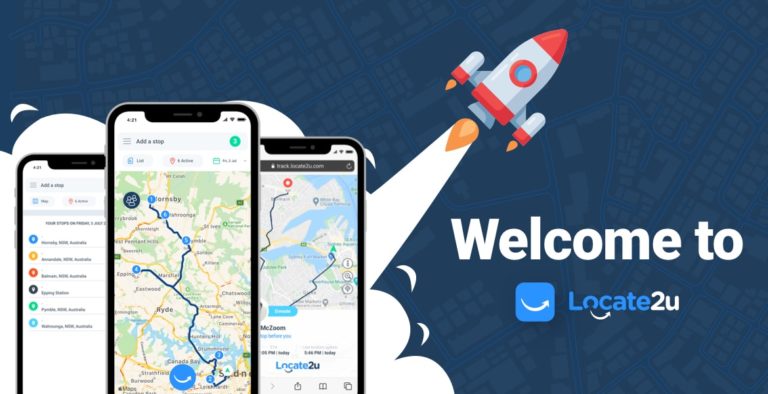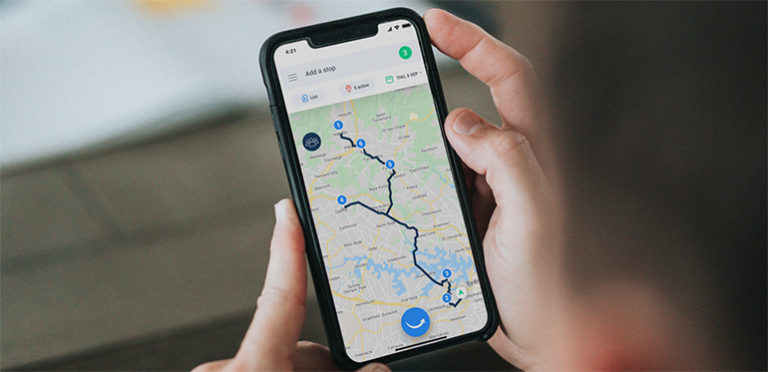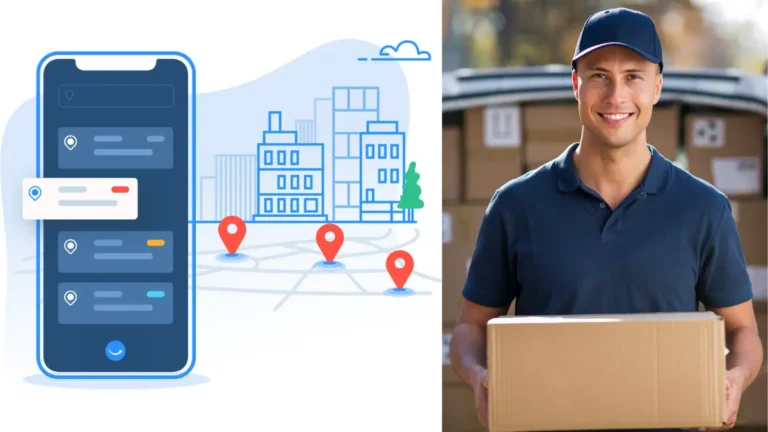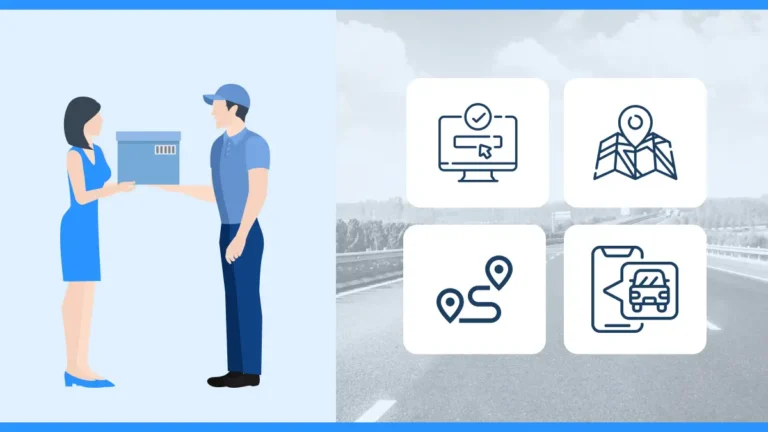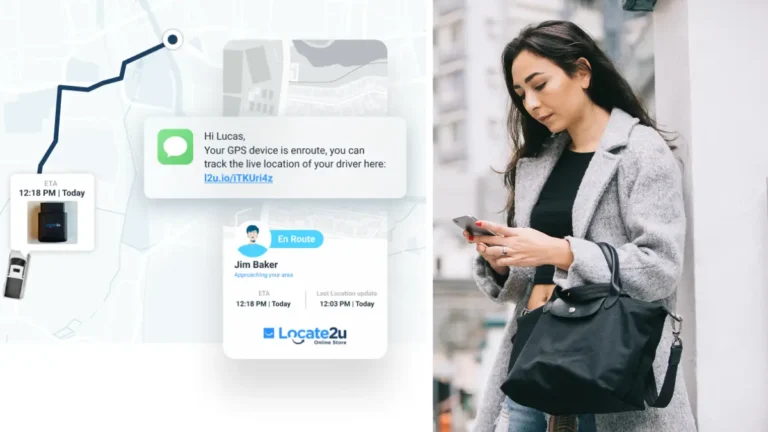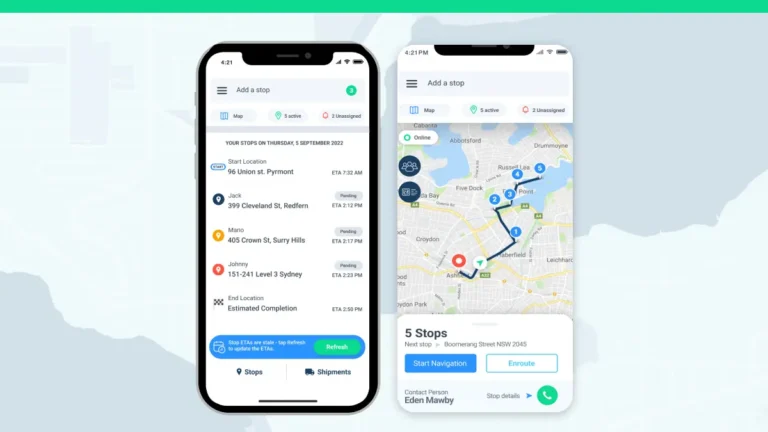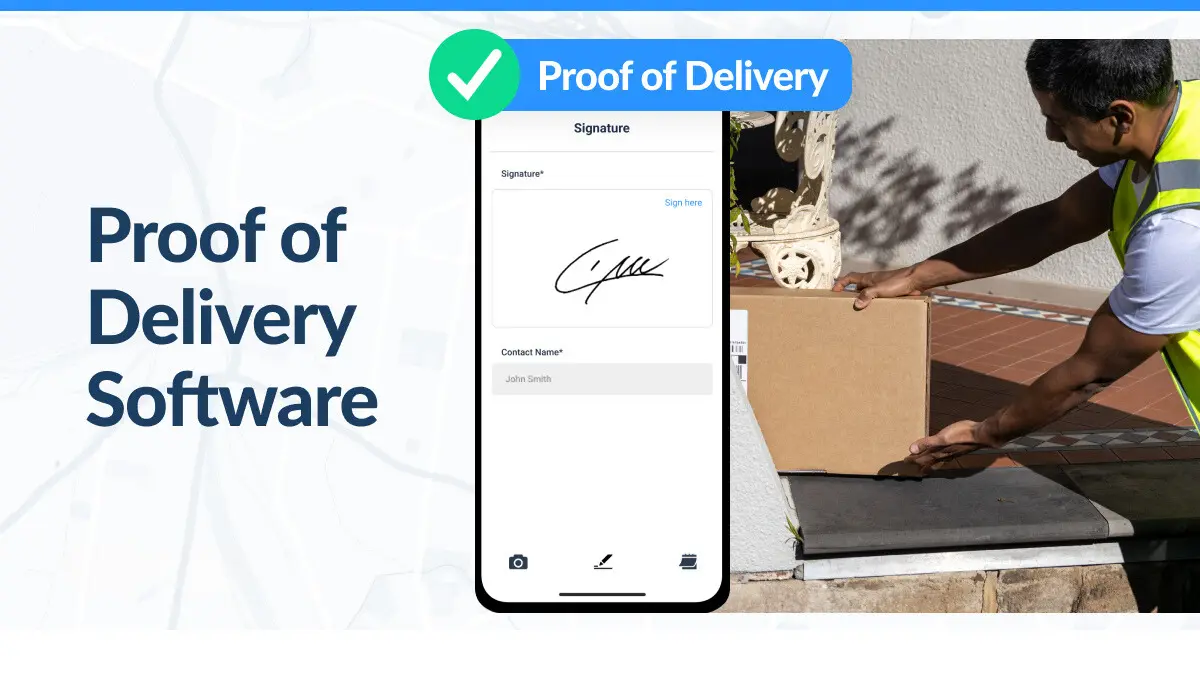
What is proof of delivery? Proof of delivery (POD) is a critical component in the delivery process for businesses and delivery companies alike. With the advancement of delivery software and digital solutions, proof of delivery has transformed from traditional paper-based delivery documents to electronic PODs. It serves as digital proof that the delivery has been successfully completed, ensuring accountability, accuracy, and transparency.
Delivery drivers play a pivotal role in generating and utilizing proof of delivery, making it an essential aspect of a business’s delivery processes. This article will explore proof of delivery, its significance in delivery operations, and how it has evolved to meet the demands of the modern world, including the rising need for contactless delivery and the secure handling of legal and financial documents.

What is proof of delivery?
Documentation or evidence proving a recipient received the requested goods or services is known as proof of delivery. Depending on the delivery method and the amount of information needed, several different things can be used as proof of delivery. Here are a few frequent examples of delivery proof:
- Assurance of Delivery Signed: One of the oldest and most common types of delivery proof is this one. On a paper or digital delivery receipt, the recipient’s signature is required. The recipient’s signature serves as proof that the package was delivered.
- E-POD: With the development of technology, electronic proof of delivery, or ePOD, has gained popularity. It involves capturing delivery information and obtaining electronic signatures from receivers using digital devices like smartphones, tablets, or specialized handheld devices. These electronic documents serve as delivery verification.
- GPS tracking: GPS tracking and geolocation information can be used as delivery verification for packages delivered by courier services or logistics firms. These systems offer compelling proof that the products were delivered to the specified destination by providing real-time information about the location and movement of the delivery vehicle.
- Barcodes or QR Codes: Delivery firms can track and verify delivery using barcodes or QR codes. As it creates a digital record of the successful delivery, scanning these codes at the delivery place might act as proof of delivery.
What is a POD document?
A proof of delivery document is a record or piece of paper that attests that goods or services were successfully delivered to the intended recipient. It confirms that the delivered goods or services complied with the terms of the contract and the needs of the intended receiver. The proof of delivery document typically contains all pertinent details about the delivery, including the recipient’s name, delivery address, date, and time of delivery, information on the delivered items, and the recipient’s signature or acknowledgment of receipt.
For businesses to preserve openness, settle disagreements, manage insurance claims, and ensure customer happiness, a thorough proof of delivery document is essential. In the event that there are any inconsistencies, delivery mistakes, or other potential problems during the shipping or delivery procedure, it is an essential piece of documentation.

Why is POD important?
Proof of delivery shows that the recipient has got the goods or services in the intended manner. It ensures accountability and lowers conflicts or misunderstandings by attesting that the things were delivered to the right place and received by the intended receiver.
Legal and financial protection
Evidence of delivery is important in each of these contexts. It protects both the sender and the recipient by offering proof to back up assertions, promises, or guarantees. Proof of delivery can be used as evidence in disputes to settle disagreements and prove that contractual commitments have been met.
Trust and consumer Satisfaction
Providing proof of delivery increases consumer confidence. Customers are given the reassurance that their orders have been effectively delivered, which increases their faith in the sender’s dependability and professionalism. Repeat business, favorable customer connections, and positive reviews may result from this.
Logistics and operations management
The proof of delivery is a crucial component of these two disciplines. Businesses are able to effectively manage inventories, ensure prompt deliveries, and track and monitor the flow of goods. It enables companies to evaluate the effectiveness of delivery systems, pinpoint areas for development, and streamline supply chain processes.
Trust and consumer Satisfaction
Providing proof of delivery increases consumer confidence. Customers are given the reassurance that their orders have been effectively delivered, which increases their faith in the sender’s dependability and professionalism. Repeat business, favorable customer connections, and positive reviews may result from this.
Logistics and operations management
The proof of delivery is a crucial component of these two disciplines. Businesses are able to effectively manage inventories, ensure prompt deliveries, and track and monitor the flow of goods. It enables companies to evaluate the effectiveness of delivery systems, pinpoint areas for development, and streamline supply chain processes.
Processing of Insurance Claims
For insurance purposes, proof of delivery is frequently needed. Proof of delivery assists in completing insurance claims in situations where items are lost, damaged, or stolen during transit. It streamlines the process of reimbursement or compensation by offering the essential evidence to support the claim.
Benefits of proof of delivery
A shipment or package has been successfully delivered to its intended recipient when there is proof of delivery or POD. Putting in place a strong proof of delivery system has various advantages, such as:
Accountability and Transparency
POD offers a transparent record of the delivery process, enabling both the sender and the recipient to monitor the advancement of the shipment. It helps settle any disagreements that might occur over the delivery status and provides accountability for the delivery service.
Customer satisfaction
Giving clients proof of delivery gives them assurance and faith in the delivery procedure. Customers may rest easy knowing that their items have been delivered successfully, and they can simply check the delivery information if necessary. Customer happiness increases, and the whole customer experience is improved.
Resolution of conflicts
The POD serves as a trustworthy document to address difficulties in the event of any discrepancies or conflicts. The proof of delivery can be used to confirm if the shipment was delivered to the right recipient and in good condition in the event that there are allegations of non-delivery or damaged goods.
Operational Efficiency
The delivery process is streamlined and improved with the implementation of a POD system. Using electronic equipment or mobile apps, delivery staff can record real-time data such as the recipient’s signature, delivery time, and position. As a result, there is no longer a need for manual paperwork, administrative duties are decreased, and productivity is increased.
Inventory management
POD helps to keep accurate records of the inventory. Businesses may quickly update their inventory systems and have a current picture of their stock levels by confirming the delivery of the goods. This makes it possible to plan inventories effectively, lowers stockouts, and enhances supply chain management.
Legal Protection
Proof of delivery may provide legal protection in some sectors, including logistics and transportation. It provides proof that the delivery commitments have been met and, if necessary, may be utilized in court procedures.
Delivery Performance Analysis
POD data analysis enables companies to assess their delivery performance and pinpoint areas for development. Organizations may optimize their logistics operations, increase delivery speed, and spot any recurring problems by tracking KPIs like delivery times, order accuracy, and customer feedback.

How do you get POD?
Depending on the delivery method and the level of specificity necessary, there are a number of ways to obtain confirmation of delivery. Here are a few typical approaches:
Receipt for Delivery Signed
Getting a delivery receipt that has been signed is one of the most conventional and traditional techniques for physical shipments. To confirm receipt of the products or services, the recipient signs a paper document or an electronic device.
ePOD
The popularity of electronic evidence of delivery has increased with the development of technology. It involves capturing delivery information and obtaining electronic signatures from receivers using digital devices like smartphones, tablets, or specialized handheld devices. These electronic documents serve as delivery verification.
Online monitoring and confirmation services
Online monitoring and confirmation services are widely available from courier and logistics companies. Senders and recipients can access real-time updates on the delivery status by inputting a specific tracking number or reference code. Following the successful delivery of the goods or service, these systems frequently offer delivery confirmation.
Delivery Confirmation Emails or Notifications
Upon successful delivery, certain delivery services automatically send email or notification alerts to both senders and recipients. These alerts, which offer a time-stamped record proving that the product or service has been successfully delivered, can be used as evidence of delivery.
GPS tracking and geolocation
GPS tracking and geolocation information can be used as delivery verification for packages delivered by courier services or logistics firms. These systems offer compelling proof that the products were delivered to the specified destination by providing real-time information about the location and movement of the delivery vehicle.
Barcodes or QR Codes
Delivery firms can track and verify delivery using barcodes or QR codes. As it creates a digital record of the successful delivery, scanning these codes at the delivery place might act as proof of delivery.

Who is in charge of providing delivery proof?
Usually, the party or parties involved in the delivery process are responsible for providing proof of delivery. Depending on the conditions and agreements between the sender, recipient, and delivery service provider, the precise obligations may change. The main players and their various roles are listed below:
- Sender/Shipper: The party starting the delivery, known as the sender or shipper, is in charge of making sure that the products or services are packaged, labeled, and delivered to the delivery service provider. Their duties in relation to proof of delivery may include
- Provide precise delivery details, such as the recipient’s name and address.
- Choosing a dependable delivery provider that provides tracking and proof of arrival.
- Providing any documents or instructions essential for the delivery process.
- Providing evidence of delivery documents, such as signed delivery receipts or electronic confirmations, when needed.
- Recipient/Consignee: The recipient or consignee, the party receiving the goods or services, may be held accountable for proof of delivery in the following ways:
- Making yourself available at the designated delivery place or making alternative arrangements.
- Inspecting the delivered things to ensure that they correspond to the order or service requested.
- If the delivery provider or the sender requires it, provide a signature or confirmation of receipt.
- If there are any anomalies or concerns with the delivered items, notify the delivery provider or the sender as soon as possible.
- Delivery Service Provider: A delivery service provider, such as a courier business or postal service, is critical to the safe and timely delivery of goods or services. Their proof of delivery obligations may include:
- Managing the transportation and delivery of the commodities in accordance with the terms agreed upon.
- Accurate tracking information, including delivery status and timestamps, must be collected and maintained.
- Obtaining signatures or receipt confirmation from the receiver, if necessary.
- On request, providing proof of delivery papers or records to the sender or recipient.

How much does POD cost?
The cost of proof of delivery (POD) varies depending on a variety of factors, including the approach or technology used, the volume of deliveries, and the specific features and services required. Here are a few common methods for obtaining evidence of delivery, as well as the fees associated with them:
Paper-based system
In traditional paper-based systems, delivery receipts or invoices are printed and distributed. Printing supplies such as paper and ink, as well as labor costs for manual processing, filing, and storage, are typically included in the cost. However, the actual cost may vary substantially depending on the scope of operations and the effectiveness of human processes.
Electronic-POD
Many organizations have moved to electronic signature capture systems, in which delivery people use mobile devices or tablets equipped with specific software to obtain digital signatures from receivers. One-time charges for obtaining the appropriate hardware and software licenses, as well as continuing payments for software maintenance, upgrades, and support, may be incurred.
Scanners for barcodes or QR codes
Some firms employ scanners for barcodes or QR codes to gather proof of delivery. This method entails attaching unique barcodes or QR codes to delivery objects or papers, which are then scanned upon delivery. The price usually includes the purchase of barcode labels or QR code stickers, as well as the necessary scanning devices and software.
GPS tracking and geolocation
GPS tracking systems can provide real-time tracking and geolocation data, which can be used to establish proof of delivery. The cost of establishing GPS tracking varies according to the tracking solution selected. It could include hardware costs for GPS devices or car trackers, subscription fees for tracking software or platforms, and any extra services or features provided by the vendor.
Is a photo proof of delivery?
Yes, a photograph can be used as proof of delivery. Taking a snapshot can be an efficient approach to documenting and offering proof that goods or services have been delivered in some circumstances, particularly for deliveries or services that require visual documentation. Important facts such as the delivered things, their condition, and the location or recipient might be captured in the photo.
It adds another level of visual validation to the proof of delivery procedure. It is crucial to note, however, that the acceptance of a photo as proof of delivery may differ based on the individual criteria and regulations of the parties involved.

What is the Proof of Delivery feature of Locate2u?
The proof of delivery feature offered by Locate2u empowers each delivery driver to acquire e-signatures from customers using their mobile devices, ensuring a secure and tamper-proof record of deliveries. By capturing electronic signatures, the accuracy of deliveries is enhanced, and the records become easily accessible for management and analysis.
Additionally, real-time tracking provides continuous updates on the progress of deliveries, while access to the drivers’ current location promotes transparency and allows for efficient route planning, ensuring timely deliveries.
You can receive automated updates that provide you with real-time information on your drivers’ whereabouts, allowing you to keep your clients updated. These notifications not only eliminate the need for customer follow-ups but also make it easy to present stakeholders with timely updates.
Our software provides extensive data and analytics, allowing you to obtain vital insights into your distribution operations. You may spot patterns and make informed decisions to improve your overall delivery process by obtaining detailed information such as delivery times, client feedback, and routes via reporting and analytics.

Case study: Franz Building Supplies
Franz Building Supplies, a building supply company, successfully enhanced team accountability, customer experience, and their overall delivery process by implementing our reliable delivery management software. The real-time tracking feature provided by Locate2u played a crucial role in improving team accountability.
By accessing their drivers’ live locations, Franz Building Supplies gained visibility and assurance that each booking was being successfully completed. They even utilized live tracking links sent via SMS to provide customers with a more reliable estimated time of arrival (ETAs).
Our proof of delivery system became a saving grace for Franz Building Supplies. It allowed drivers to capture digital photos and e-signatures, providing concrete evidence of successful deliveries. This information reduced the likelihood of customer disputes regarding damaged or missing goods.
“We could’ve really used the proof of delivery in past deliveries. Every now and then we’ve had issues with delivery and having access to photos would’ve really helped us. The fact that proof of delivery is available by Locate2u is pretty monumental from our side.” Michael Godwin, Senior Sales, and Account Manager
Conclusion
For a delivery company and other businesses, proof of delivery (POD) is a vital part of modern delivery operations. Locate2u is a delivery management software that can provide proof of delivery as well as optimizes your delivery procedures and improves accountability. You can streamline business operations and boost customer satisfaction by using our advanced capabilities, such as real-time tracking, proof of delivery, and route replay. Utilize the potential of electronic POD with Locate2u to take your delivery company to the next level.
About the author
Marketing Coordinator at Locate2u having completed a Bachelor of Creative Arts, majoring in English Literature and Creative Writing. I have extensive experience in editing and proofreading, as well as creating content for a range of audiences.



